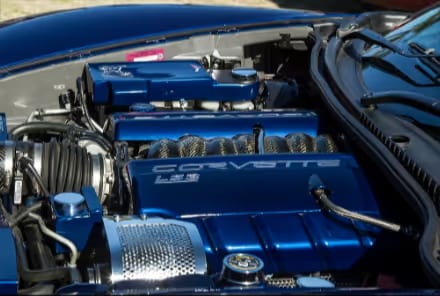

Anyone who’s considered buying a new car recently has probably seen that there are several different types of engines available. In addition to traditional gas and diesel, there are electric and hybrid options. It’s important to know how each of these operates and their benefits and drawbacks before choosing a new vehicle. Here’s a closer look at the different types of engines and the differences between them.
The Basic Operation of Internal Combustion Engines
The internal combustion engine is the most common type of engine, and it’s been around since the 1800s. When the driver presses on the accelerator of a vehicle with a combustion engine, the fuel pump moves the fuel from the gas tank to a filter that removes debris to prevent clogging, and then it moves the fuel to the engine’s cylinders. Combustion engines come in different configurations. Here’s a look at the different types.
Inline
An inline engine, or a straight engine, has its cylinders aligned in a straight line. The pistons rotate 360 degrees. Most inlines have between three and six cylinders.
V
A V-style engine has its cylinders arranged at an angle that forms a V shape. These come as either a V-6, V-8, or V-12, with three, four, or six cylinders on each side.
Rotary
The rotary engine is not as common in cars as it is in airplanes. This type of engine has a single crankshaft that sits in the center of the pistons. The pistons move in a star pattern instead of the up-and-down movement found in inline and V-style engines.
V-style engines are often found in larger vehicles because they have more power and the ability to tow heavier loads. Inline engines are smaller and more lightweight. They have fewer components and are cheaper and easier to fix.
Mechanics and Benefits of Electric Motors
Electric cars use an electric motor that gets power from a battery pack. The battery stores energy and then transfers it to the motor. An electric motor uses a current that travels through a wire to spin magnets. It also uses a generator, which is like the alternator in a gas-powered car. The generator creates electricity by spinning magnets in a coil. Since electric motors can’t generate enough electricity to hold a charge or recharge by themselves, they need to be plugged in to restore the batteries.
Electric motors have several benefits over combustion engines. They can significantly reduce fuel costs because they are highly efficient and better for the environment, as they do not produce any tailpipe emissions. Electric motors have fewer components than combustion engines, so they are easier and cheaper to maintain. There is no need for oil changes, and since electric motors use a single-speed transmission and have a regenerative braking system, the brakes have less wear and tear.
Looking at the performance benefits of an electric motor over a combustion engine, it is more efficient. Most electric motors will convert more than double the amount of electric energy into mechanical energy than a traditional engine. They can also generate full torque immediately. This is evident when drivers step on the accelerator. An electric vehicle will accelerate quicker and more efficiently.
Unique Features of Hybrid Engines
Hybrids are unique because they use both an internal combustion engine and an electric motor. Since they use two power sources, hybrid vehicles use less fuel and produce less waste. Hybrids also use a regenerative braking system to capture energy and use it to recharge the battery.
There are two different types of hybrid engines.
Full Hybrid
A full hybrid keeps its battery charged by using the gas engine and regenerative braking. This type of hybrid does not need to be plugged into an external source. The extra power that comes from the electric motor or motors allows for a smaller engine, reducing emissions. The battery used to keep the motor running can also provide power to auxiliary loads, which reduces engine idling when the car is stopped.
Plug-in Hybrid
Plug-in hybrid systems also use both a combustion engine and an electric motor, but the internal charging system doesn’t charge the battery completely. Instead, it needs an external source to finish charging. Because of this, plug-in hybrids have a longer all-electric range than full hybrids.
Hybrid engines are more fuel-efficient than gas-powered vehicles. Since they can determine whether it is more efficient to use the gas or electric motor depending on the conditions, they often perform better. Hybrid vehicles are also more eco-friendly than gas and diesel engines.
Characteristics of Diesel Engines
A diesel engine is another type of internal combustion engine, but it uses compressed ignition to ignite the fuel. The most significant difference between gas and diesel engines is that diesels do not use spark plugs. Gas engines use a mixture of gas and air, which is compressed and then ignited by a spark created by the spark plug. A diesel engine just takes air, compresses it, and then injects fuel into it. This engine uses the heat of the compressed air to ignite instead of a spark.
Diesel engines are often more fuel-efficient than gas-powered engines, but they are not as efficient as electric motors or hybrid setups. Diesel engines also require less maintenance than gas engines. The performance benefits of diesel include better acceleration and higher torque, which translates into better towing and hauling capabilities.
Are You Ready To Choose Your Next Vehicle Engine?
Each of these engines has benefits and drawbacks. The right engine for your next vehicle depends on your driving needs and lifestyle. A traditional gas engine or a hybrid is a good choice if you don’t have a place to plug in a vehicle, but electric vehicles are a good choice if you’re not concerned about range or charging. Find out more by calling Gerry Lane Chevrolet or stopping by the dealership in Baton Rouge to speak with one of our sales professionals.
Chevy Corvette V8 engine-2= by John is licensed by CC BY-SA 2.0 DEED